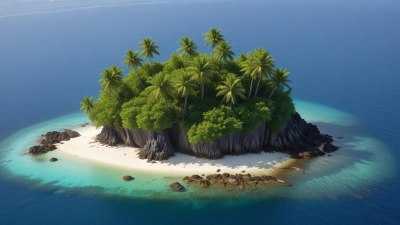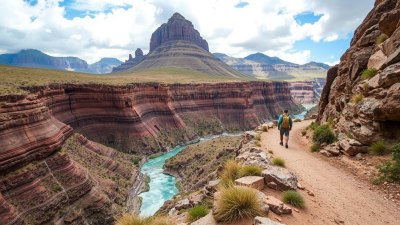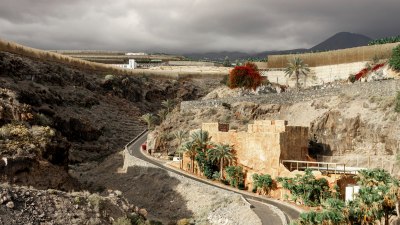Why This Remote Island Is a Dream for Stargazers
Discover the enchanting allure of remote islands that offer breathtaking stargazing experiences, perfect for astronomy lovers.

This image was created with the assistance of Freepik
Stargazing has fascinated humans for millennia, inspiring tales of adventure and exploration. Among the various locations where one can admire the night sky, remote islands stand out as some of the best spots for stargazing enthusiasts. With minimal light pollution, clear horizons, and a unique vantage point, these islands provide a heavenly backdrop for decoding the mysteries above. In this article, we will delve into why a specific remote island is hailed as a dream destination for stargazers, exploring its geographic advantages, cultural significance, and seasonal attractions.
Geographic Advantages
Remote islands often boast geographic features that enhance their stargazing potential. Situated far from the distractions of urban life, these islands feature expansive skies that stretch on for miles, interrupted only by the occasional silhouette of trees or cliffs. This unspoiled terrain helps to minimize light pollution, allowing for clearer visibility of celestial bodies. For example, an island in the South Pacific known as Bora Bora has quickly gained popularity for its unrivaled night skies, blending natural beauty with stellar views.
Minimal Light Pollution
One of the primary reasons remote islands excel in stargazing is the minimal light pollution they offer compared to urban environments. Cities illuminate the night with streetlights, billboards, and vehicle headlights, creating a bright haze that obscures celestial observations. In contrast, many remote islands have limited infrastructure and a small population, meaning fewer artificial lights disrupt the darkness. This creates an ideal setting where stars twinkle brightly and constellations reveal their intricate stories.
Accessibility and Uniqueness
While some remote islands may require a trek or a flight, the journey is often worth the effort. Accessibility plays a key role in making certain islands ideal for stargazers. For instance, the Hawaiian Islands have numerous accessible destinations, including Mauna Kea, where visitors can experience the breathtaking beauty of the Milky Way and beyond. Often, remote islands provide unique accommodations ranging from eco-lodges to glamping experiences, making it easy to immerse oneself in nature while stargazing.
Cultural Significance and Astronomy
Many cultures connected to remote islands have deep ties to the stars. Ancient navigators used the stars to guide their voyages across vast oceans, making stargazing an integral part of their daily lives. This cultural significance enhances the experience of modern stargazers, as they can connect with the histories and traditions of those who have gazed at the same celestial bodies before them. For example, the Polynesians had an intricate understanding of star navigation, and visitors to islands like Tahiti can appreciate the legacy of this knowledge while observing the night sky.
Best Time for Stargazing
Different seasons offer an array of different stargazing experiences. For many islands, summer months are typically the most popular due to warm temperatures, clear skies, and longer daylight hours. However, visiting during the winter months can yield spectacular results, as fewer clouds and atmospheric conditions can enhance visibility. Additionally, specific celestial events such as meteor showers, eclipses, or planetary alignments might occur during certain times of the year, providing stargazers an even more unforgettable experience.
Equipment and Accessories
While the naked eye allows stargazers to appreciate the beauty of the night sky, bringing along some equipment can dramatically enhance the experience. Telescopes, binoculars, or even simply a quality camera can help capture the stunning celestial phenomena that remote islands provide. Before heading to an island for stargazing, consider packing a stargazing app on your smartphone to help identify constellations and planets. These tools help direct attention to key features of the night sky, making it easier to appreciate the beauty above.
Local Stargazing Events
Many remote islands embrace their status as stargazing paradises by organizing local stargazing events or festivals. These gatherings often welcome tourists and locals alike to observe celestial phenomena together. Whether it’s a full moon night, a meteor shower, or a cultural festival centered around astronomy, these events create a sense of community and foster a shared appreciation for the night sky. Engaging in such events can lead to learning opportunities where experienced astronomers share their insights and guide newcomers through the constellations.
The Ecological Aspect
Stargazing also intersects beautifully with conservation efforts on remote islands. Many islands prioritize preserving their natural environment, leading to initiatives that reduce light pollution and promote dark sky reserves. Dark sky reserves offer designated areas with exceptional nighttime environments free from artificial light, creating a haven for both stargazers and nocturnal wildlife. By supporting sustainable tourism on these islands, visitors can help contribute to the protection of pristine environments and encourage future stargazing opportunities.
The Role of Technology
With the advent of technology, our understanding of the cosmos has expanded exponentially. New advances in astronomy equipment allow stargazers not only to observe but also to engage with a broader audience. Satellites and space telescopes provide data about celestial events and phenomena. Consequently, remote island stargazers can stay informed about cosmic events and utilize data apps to enrich their experience. While traditional methods will always hold value, modern technology can enhance comprehension of the universe and its spectacular displays.
Unique Experiences
Stargazing on a remote island transcends mere observation—it's an experience laden with magic and wonder. Witnessing the cosmos in such isolation brings feelings of calm and introspection. Imagine lying on a soft beach under the vast night sky, the sound of waves gently lapping at the shore, as you gaze upwards and lose yourself in a sea of stars. For many, this experience is transformative, inspiring a sense of connectedness to something far greater. Preparing for a stargazing journey often sparks a sense of adventure, as packing camping gear, choosing a scenic location, and anticipating celestial wonders builds excitement.
Photography and Crafting Memories
The desire to capture the beauty of the starry night is often part of the stargazing experience. Astrophotography allows enthusiasts to record memories and share their passion with others. Many remote islands provide photographers with unique backdrops of both land and sky, enabling stunning compositions. With ideal conditions on these secluded islands, many can even capture remarkable images of the Milky Way, Northern Lights, or meteor showers. These photos not only serve as lasting keepsakes but also as means of inspiring others to pursue their own astronomical adventures.
Ultimately, remote islands remain supreme destinations for stargazers, offering a combination of accessibility, minimal light pollution, rich cultural heritage, and stunning natural beauty. Each island has its own charm, inviting visitors to explore the skies and engage in celestial observations. As the world increasingly embraces sustainable tourism, these islands play a crucial role in preserving our connection to the stars. For anyone seeking a deeper appreciation of the universe, visiting a remote island for stargazing is truly an experience of a lifetime.











